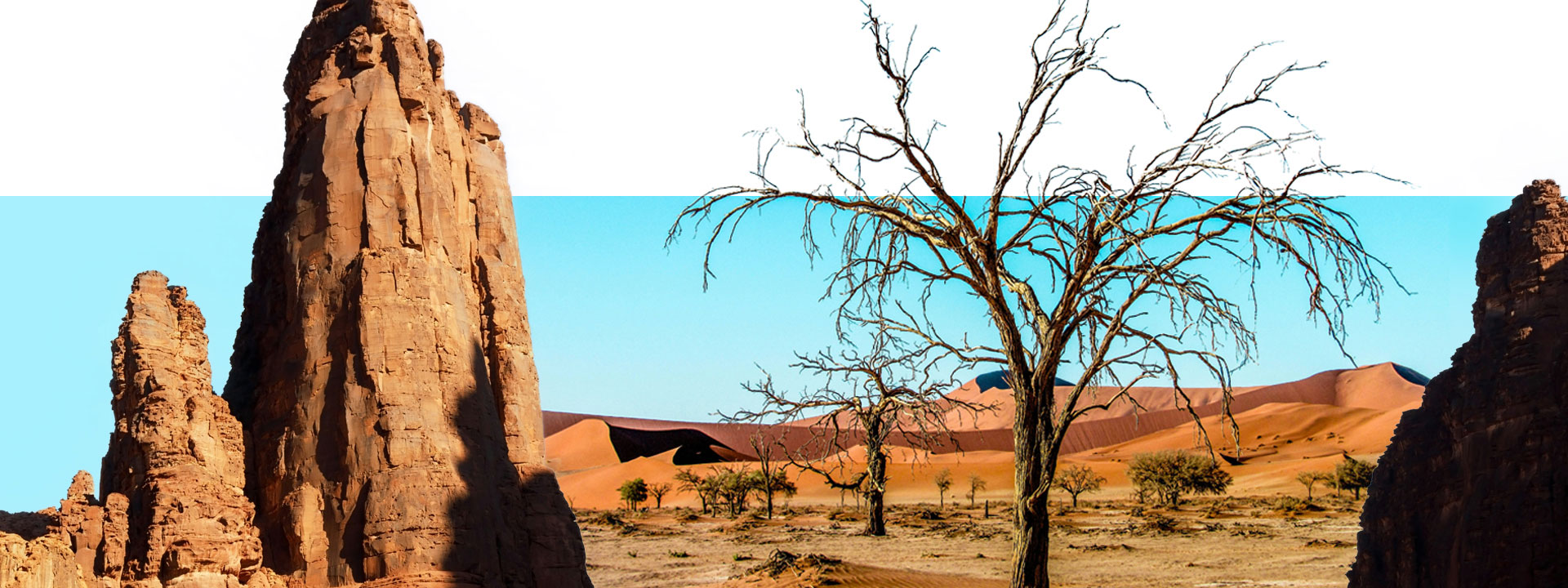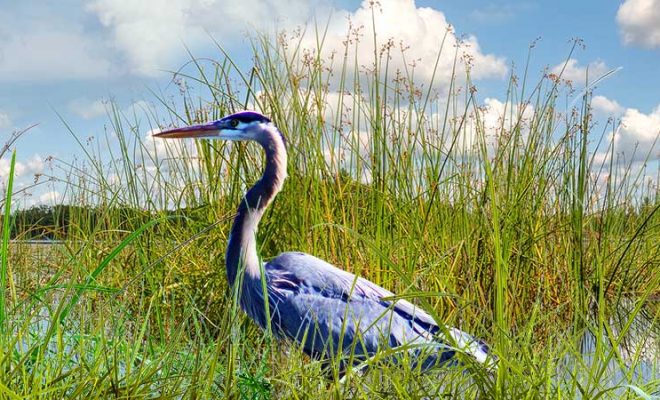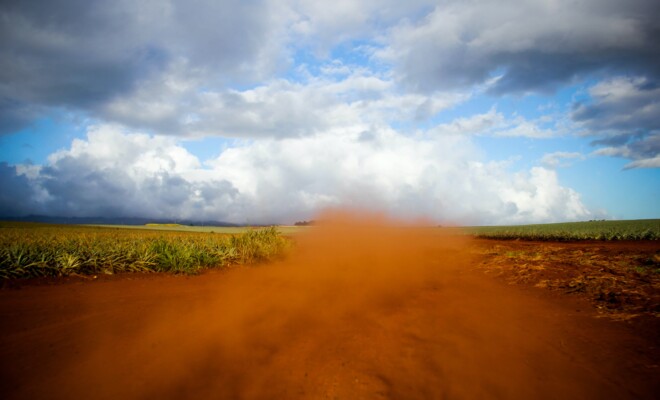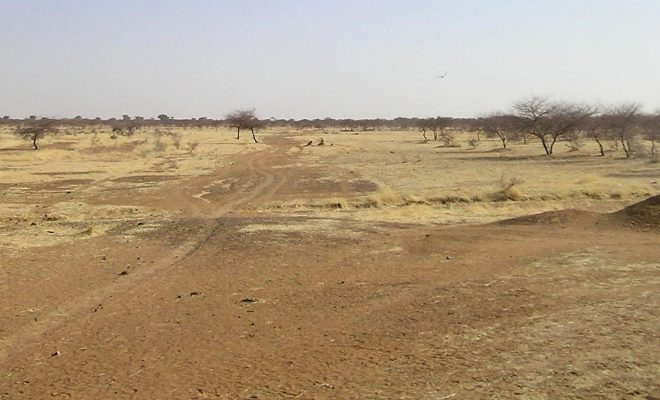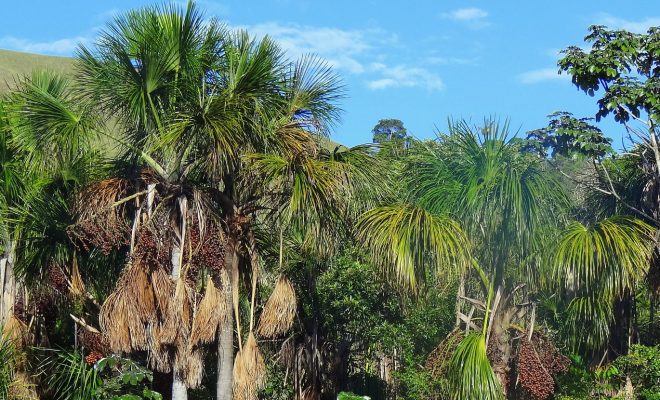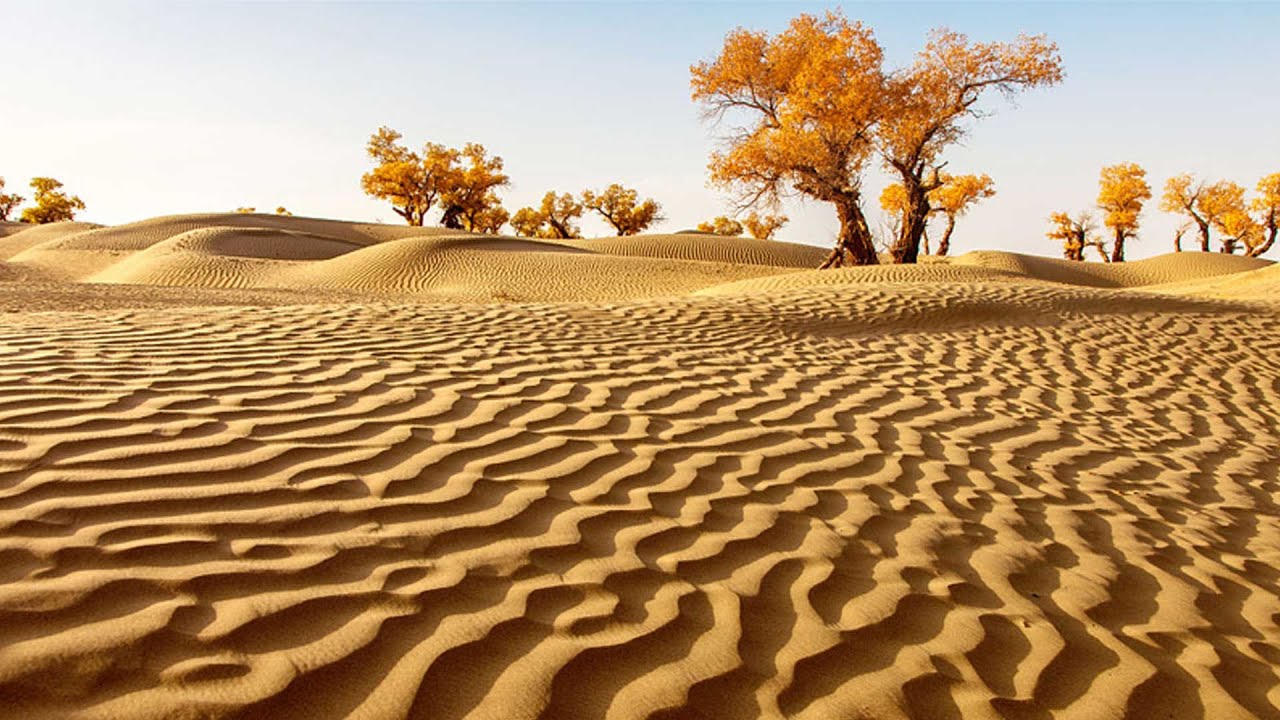
Despite common misconceptions, deserts are teeming with life, and oases serve as one prominent example. The presence of water in arid soil sparks remarkable transformations. The typical oasis conjures an image of a water pool surrounded by shrubs and trees, further bordered by bushes, all against the backdrop of vast sand dunes.
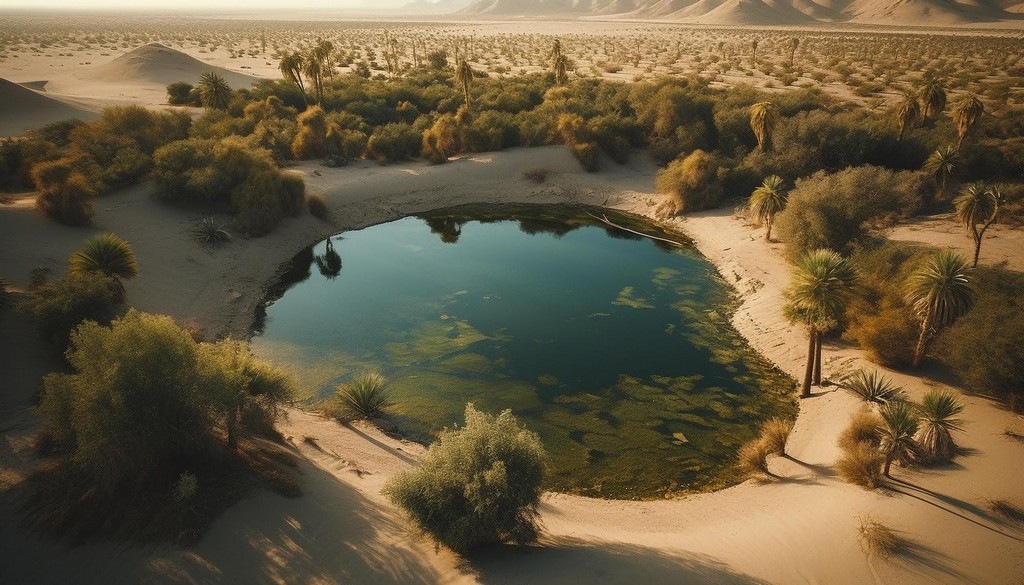
Oases are ecosystems that have significantly shaped human history. © Stockgiu en Freepik
Oases derive their water from the subsoil, typically tapping into ancient aquifers that have persisted since the era when deserts were lush and experienced rainfall. Alternatively, some oases collect water that swiftly filters through the sand without evaporating during brief rainy periods.
Often, the creation of oases is attributed to the dynamics of dunes, which, propelled by the wind, create a rhythmic undulation of sand akin to ocean waves. Through their perpetual motion, these dunes shape ridges and troughs, occasionally reaching deep enough to access the water table. Consequently, a spring emerges, giving rise to a pond. This process captivates ecologists as it marks the initiation of a fascinating ecological phenomenon.
An Astonishing Feedback
The upward movement of groundwater sets off a surge of life that was dormant until then. Seeds, carried by the wind and previously intermingled with the sand, germinate and give rise to a layer of vegetation surrounding the water source. If these initial plants survive, they initiate a feedback loop: their roots help retain soil and moisture, and the wind introduces more plant life, including species termed “anhydrobiotic” by botanists. These plants, capable of degrading their chlorophyll and curling up in a dry, ball-like form, roll across the sand. Simultaneously, animals attracted by the water contribute to the ecosystem by depositing feces, introducing additional seeds and insects into the environment.
A race against time unfolds in the battle against dunes. If the newly formed vegetation cover is expansive enough and the plants successfully take root before the sand reclaims the water body, the system can generate “new” soil. In many instances, this soil capitalizes on the nutrient richness of the sand, particularly in areas like the Sahara, where vast expanses once dried out, leaving behind dust composed of fossilized exoskeletons of algae and other organisms. This suspended dust travels across the Atlantic, propelled by trade winds, nourishing the jungles of the Americas. In oases, it fortifies the plant mass, contributing to its growth.
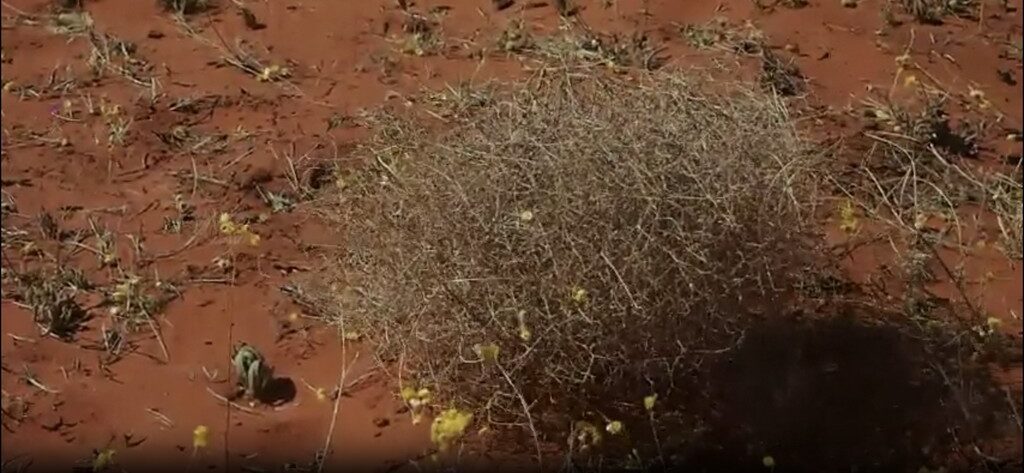
In the desert, the wind introduces more plant life, including species termed “anhydrobiotic” by botanists. These plants, capable of degrading their chlorophyll and curling up in a dry, ball-like form, roll across the sand. © Mark Marathon
Upon reaching a critical size, an oasis establishes a system of thermal breezes that creates a microclimate. The oasis vegetation has a cooling effect on the air within the oasis, in stark contrast to the warmer desert surroundings. The warm air above the sand ascends and, as it cools, descends over the oasis. This movement allows the cooler air from the oasis to flow outward into the desert. This cyclic process contributes to cooling the oasis environment and amplifies the feedback loop, further aiding the expansion of vegetation.
The process culminates in what is termed “primary ecological succession”: the emergence of a sophisticated ecosystem drastically distinct from the simplistic and desolate environment that existed before. It signifies the triumph of water over aridity.
Decisive in Human History
These oases, enduring for millennia, have played a pivotal role in human history by offering vital water sources amidst desolate deserts. Paleontologists theorize that between 1.8 and 1.5 million years ago, Homo habilis —hairless hominids equipped with sweat as a thermoregulatory mechanism and reliant on drinking water for hydration— ventured into the savanna and crossed deserts by following these oases. The ability of early humans to interpret geological and landscape cues allowed them to detect and utilize these oases, proving crucial in the expansion of Homo sapiens into Asia.
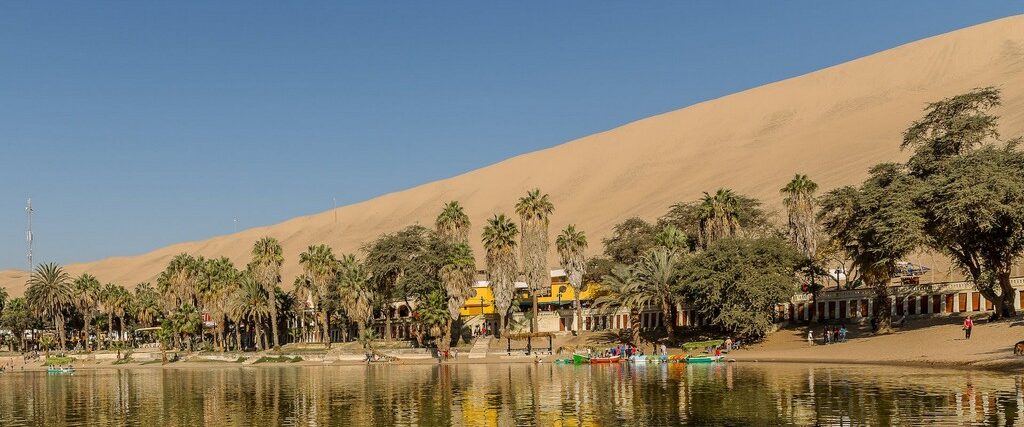
In the present day, oases continue to be crucial for numerous communities inhabiting the world’s driest regions. © Pexels / Mike Van Schoonderwalt
Prominent oases, often associated with vital trade routes, are well-documented in historical records, with notable mentions in Egypt dating back to around the 5th century BC by Herodotus. Siwa, one of the most famous oases, is believed to have been inhabited since the time of the pharaohs.
Another historically significant oasis is Kashgar in China, situated along the Silk Road in the Taklamakan Desert. This oasis played a crucial role in the establishment of a city that has thrived for over 2,000 years, serving as a vital staging post for caravans connecting China to Europe through Central Asia. The Silk Road followed a path from one water well to another and from oasis to oasis.
In the oases, travelers gathered and embraced a shared ethical code that continues to resonate in present-day communities: the belief that the right to water should be a shared priority, transcending commercial rivalries and cultural differences. The oases were characterized by a sense of fraternity that, regrettably, appears to be diminishing in our contemporary world.
Saving the Oases
In the present day, oases continue to be crucial for numerous communities inhabiting the world’s driest regions. In some areas, oases serve as inhabited and cultivated zones where springs and aquifers play a vital role in agriculture and livestock raising. However, the overexploitation of water resources has resulted in degradation in many instances. According to UN Water, human activities, especially in the context of oases classified as wetlands, combined with the impacts of climate change, pose a significant threat, potentially leading to the disappearance of these environments.
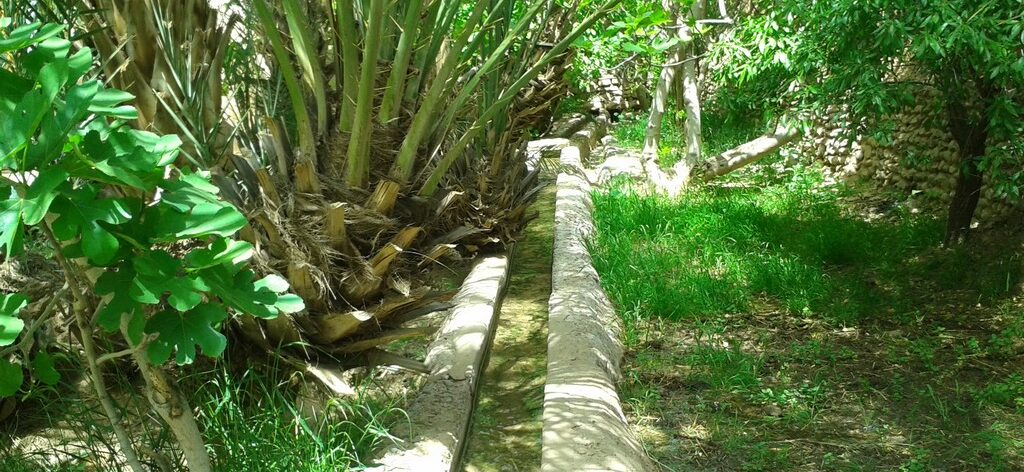
In some areas, oases serve as inhabited and cultivated zones where springs and aquifers play a vital role in agriculture and livestock raising. Irrigation canal. Figuig oasis, eastern Morocco. © Mohammed Abdeljalil
It is crucial to prioritize the protection of oases and glean valuable lessons from them. These ecosystems serve as an open book, illustrating the profound impact of water and providing captivating examples of how life can flourish in arid desert environments. Additionally, oases preserve the collective wisdom of traditional farming techniques employed by communities inhabiting them since ancient times, knowledge that holds particular relevance in the present era, emphasizing the need to reclaim and preserve these valuable practices.


